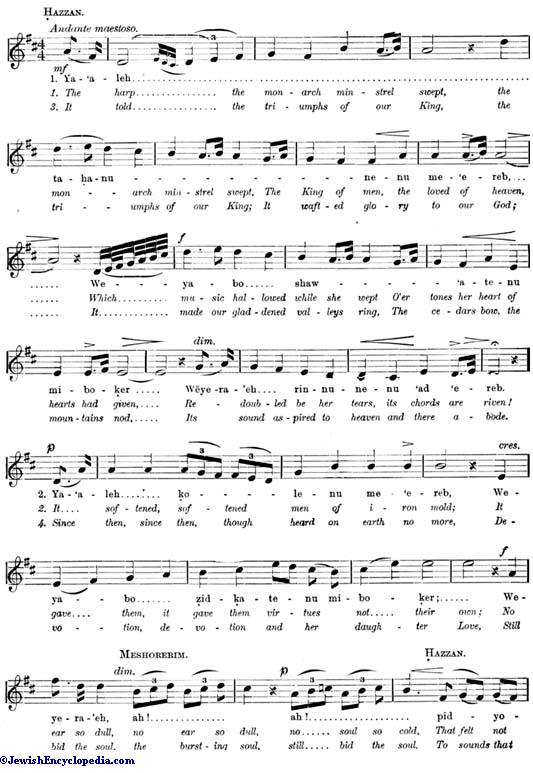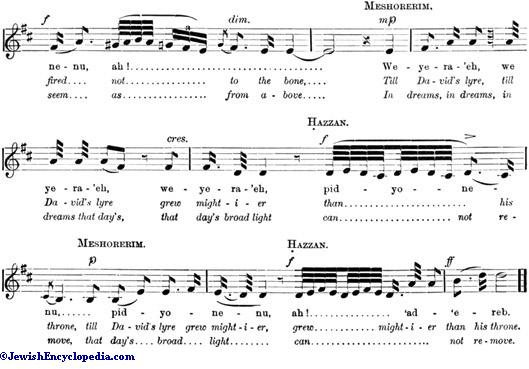YA'ALEH:
The introductory hymn prefixed to the seliḥot which follow the evening service proper of the Day of Atonement (comp. Kol Nidre) in the northern rituals. The author of the hymn has not been identified with certainty. It consists of eight strophes in reverse alphabetical order, each composed of three lines, with the twenty-second Hebrew letter thrice repeated to complete the twenty-four lines. The scheme of construction is as follows:
"Let our Z ascend from eventide, And our Y approach from morning, And our X appear till eventide."
The verbs are drawn from the prayer "Ya'aleh weyabo we-yeraeh," etc., specially inserted before the three concluding benedictions of the "'Amidah" (see Shemoneh 'Esreh), and in the grace after meals, on all festal days (comp. Shab. 24a), including the Day of Atonement. The thought, if not the form, is the basis of G. Gottheil's hymn "To Thee we give ourselves . . . from eventide to eventide" ("Union Hymnal," No. 103), for which, however, a tune from another section of the penitential services (see Ḳerobot—Ḳaliric strophic hymn) was selected.
A fine eighteenth-century melody for "Ya'aleh" has been preserved as a general setting through its adaptation by Isaac Nathan in 1815 to Lord Byron's verses "The Harp the Monarch Minstrel Swept," which was published, with pianoforte accompaniment, in the "Hebrew Melodies," issued in that year. The melody as now usually sung is somewhat less elaborate than in Nathan's version. It has been traditional in the Great Synagogue, London, since 1750 at least, and is well known on the Continent also. Its expressive swing had made it widely known and treasured in connection with the Atonement hymn even before it received a further appreciation from the fascination with which it appealed to Louis Lewandowski, the premier synagogue musician of his generation. In his "Todah w'Zimrah" (Berlin, 1876) he not only includes it with its original text for the service of the Day of Atonement (vol. ii., No. 94), but he has set it also to the chief hymn chanted by the ḥazzan in the "dew" and "rain" supplications on the Passover and Tabernacle festivals (see Geshem).


The melody is here transcribed with Byron's English verses, as presented in 1815. It extends to two stanzas of the Hebrew hymn. This application and the manner in which the old-time vocal accompanists rather than choristers, the "meshorerim," otherwise known as "singer and bass" (see Music, Synagogal), would alternate with and imitate the solo of the precentor, are further shown in the transcription by the addition of the Hebrew text of the opening strophes.
- A. Baer, Baal Tefillah, No. 1306, Frankfort-on-the-Main, 1883;
- Israel, ii. 183, London, 1898.


